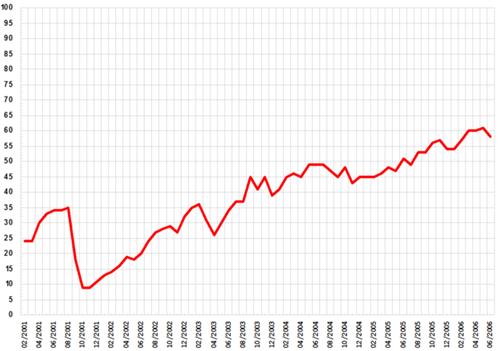
Photo credit: http://www.flickr.com/photos/derekgavey/5295516326/lightbox/
Guest Post by John Anderson – Executive Street Contributor
Risks are inevitable whether it be in business or in simple day-to-day activities. But what can be controlled are your actions towards handling those potential risks. Instead of merely reacting, you have to be proactive with your risk management decisions and here are some ways that may help you do just that.
Essentially, the four methods of risk management are the following:
1. Avoidance
To avoid potential risks would mean avoiding the very process/action that may trigger them. This may lead to saving your business from a probable loss but may equally mean lost opportunities as well. Where there is a chance for additional value to your business that significantly outweighs the loss you might otherwise incur, don’t be afraid to take risks. But when the loss far outweighs all possible opportunities, it’s wise to avoid them altogether.
2. Retention
Retain risks only when they have a high frequency or probability of happening but have a lower overall impact to your business operations. Use this method when this proves to be the most cost-effective, yet still efficient, solution to your problem.
3. Loss prevention and reduction
Preventing loss would require counteractive measures. But in the event that they cannot be mitigated, what can be done is to simply reduce their impact. For example, observe safety precautions like conducting regular fire drills to lessen the risk of loss in the event of fire.
4. Transfer
Transferring risks would lessen the impact as they are distributed or shifted to another entity.
Hedging. This would offset or limit the probability of loss caused by price fluctuation or inflation in commodities, currencies, or securities. This way, you can transfer risks without having to buy insurance policies. To protect your capital, consider investing in shares, real estate, bonds, or precious metals.
Underwriting. Securities underwriting can prove beneficial by receiving cash up front from an underwriter and transferring the risk of distributing securities such as stocks or bonds to them.
Subcontracting. Subcontracting is usually prevalent in more complex projects like construction or information technology. These subcontractors can help prevent overall project risk and even keep costs under control.
Aside from these four basic methods are other practical methods such as:
Insurance. By getting an insurer, you are ensured of the continuity and certainty of your business operations even in the event of a loss. It provides a sense of financial security that will enable you to better utilize your capital in a more beneficial endeavor.
Technological research. To avoid loss brought by technological obsolescence, arm yourself with the knowledge regarding the latest technological advancements and innovations and adapt accordingly. This will establish you as a worthy competitor in the market.
Market research. Forecasting is invaluable in the business world and your ability to anticipate changes and problems and to properly respond to it will determine your success. Employ market research to be better informed especially when deciding for long-term investments.
Safety programs. Safety whether in terms of workforce or property is imperative in all businesses. Provide proper medical care, install burglar alarms, utilize pest control methods, etc. This will definitely save you from the otherwise nuisance it will cause you in the long run.
Tight inventory control. Make sure that every transaction is accounted for and that you have a clear inventory record. This will help you ensure your product supply and distribution.
Policy knowledge. Be sure to know and adhere to governmental policies required of your business nature to avoid any legal risks in the future. Make sure you have all the needed papers and to store them in a secured place.
WHAT TO WATCH OUT FOR

Photo credit: http://commons.wikimedia.org/wiki/File:Bush_disapproval_ratings_line_graph.png
According to Aon’s 2013 Global Risk Management Survey, the top 3 risks in 2013 and projected top 3 risks three years from now are:
1. Economic slowdown
2. Regulatory/Legislative changes
3. Increasing competition
Meanwhile, risks such as business interruption (currently no. 7) and damage to reputation/brand (currently no. 4) are projected to move down in rank in the next three years. Those that are projected to move up in ranks are political risks/uncertainties (currently no. 10), failure to innovate/meet customer needs (currently no. 6), and weather/natural disasters (currently no. 16). In addition, some of the game-changing concepts or trends in the risk management industry are said to be as follow:
1. Systemic risk management
2. Stress testing
3. Integrated approach
On the other hand, technology’s role is projected to be more involved with decision support, predictive analytics, and data aggregation and analysis.
All in all, risk management is really a risky business if you’re not careful and remain oblivious to the threats posed by such ignorance. It’s best to identify the risks in advance, properly assess them so you can plan in anticipation and manage them accordingly.
Share your ideas or thoughts!
